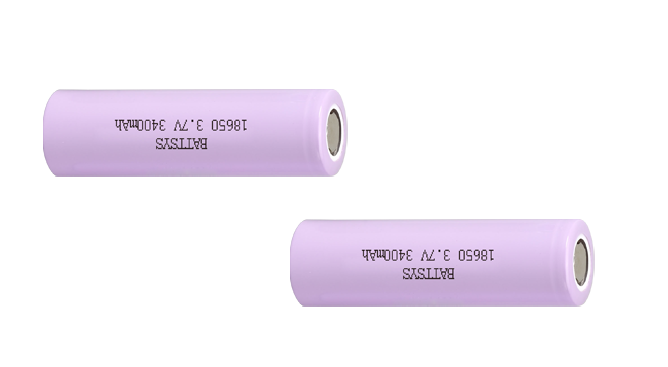Factors affecting the cycling performance of 18650 batteries.
The importance of cycling performance for 18650 lithium-ion batteries goes without saying. Macroscopically speaking, longer cycling life means less resource consumption. Therefore, the factors that affect the cycling performance of lithium-ion batteries are issues that every person related to the lithium-ion battery industry must consider.
Excessive moisture can cause side reactions with positive and negative active substances, damage their structure, and affect circulation. At the same time, excessive moisture is not conducive to the formation of SEI film. However, while trace amounts of moisture are difficult to remove, trace amounts of water can also ensure the performance of the battery cell to a certain extent.

Excessive compaction of the positive and negative electrodes can increase the energy density of the battery cell, but it can also reduce the cycling performance of the material to a certain extent. From a theoretical analysis, the greater the compaction, the greater the structural damage to the material, which is the foundation for ensuring the cyclic use of lithium-ion batteries; In addition, cells with high positive and negative electrode compaction are difficult to ensure high liquid retention, which is the basis for cells to complete normal or more cycles.
External factors such as charging and discharging rate, cut-off voltage, charging cut-off current, overcharging and overdischarging during the testing process, temperature in the testing room, sudden interruptions during the testing process, and contact internal resistance between the testing point and the battery cell can all affect the results of cyclic performance testing to varying degrees. In addition, different materials have different levels of sensitivity to the above objective factors. Uniform testing standards and understanding the characteristics of common and important materials should be sufficient for daily work use.
5. Coating film density
Considering the impact of membrane density on cycling with a single variable is almost an impossible task. Inconsistent membrane density either leads to differences in capacity or differences in the number of layers of cell winding or stacking. For cells of the same model, capacity, and material, reducing membrane density is equivalent to adding one or more layers of winding or stacking layers. The corresponding increase in membrane can absorb more electrolyte to ensure cycling. Considering that thinner membrane density can increase the rate performance of cells, and baking and removing water from electrodes and bare cells will also be easier. Of course, errors in coating with too thin membrane density may be more difficult to control, and large particles in the active material may also have a negative impact on coating and rolling. More layers mean With more foil materials and separators, it means higher costs and lower energy density, so, Balanced consideration is also necessary when evaluating.
The selection of materials is the first factor affecting the performance of lithium-ion batteries. Choosing materials with poor cycling performance, no matter how reasonable the process and perfect the manufacturing, the cycling of the battery cells cannot be guaranteed; Choosing better materials may not result in excessively poor cycling performance, even if there are some issues with subsequent production. From a material perspective, the cycling performance of a full battery is determined by the poorer of the two after matching the positive electrode with the electrolyte or the negative electrode with the electrolyte. The poor cycling performance of the material may be due to rapid changes in crystal structure during cycling, which makes it impossible to continue lithium insertion and removal. Additionally, it may be due to the inability of the active material to form a dense and uniform SEI film with the corresponding electrolyte, resulting in premature side reactions between the active material and the electrolyte, leading to rapid consumption of the electrolyte and affecting cycling. When designing battery cells, if one pole confirms the use of materials with poor cycling performance, the other pole does not need to choose materials with better cycling performance, which is wasteful.
E-Mail: inquiry@fentbattery.com
Tel: 0086 20 3901-1403
Address: No.3, Dongli Road, Xili, Dongyong Town, Nansha District, Guangzhou City, China
Copyright@ China lithium ion battery manufacturers & suppliers & producers | Lithium Battery Factory & Company-BATTSYS Sitemap